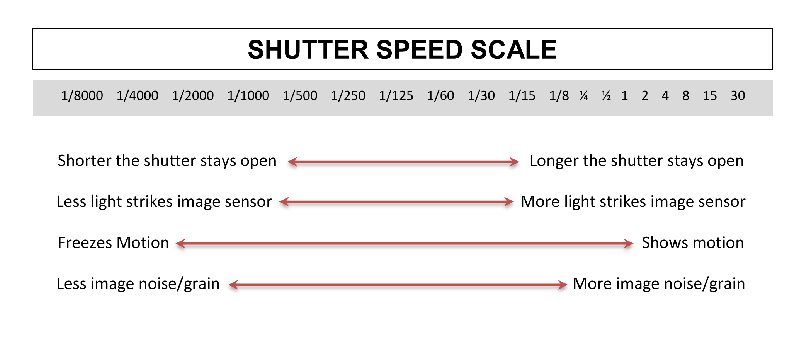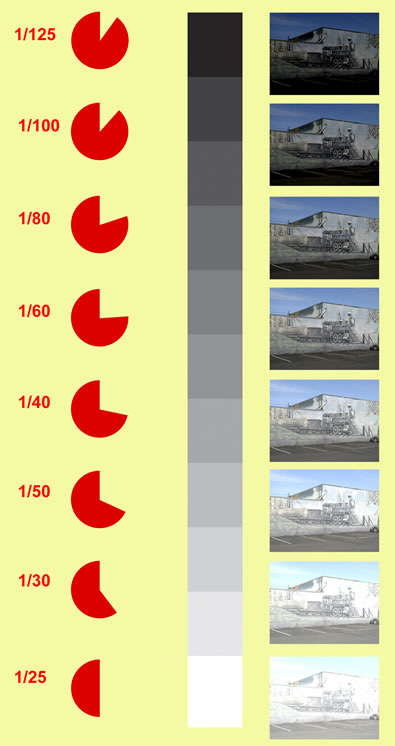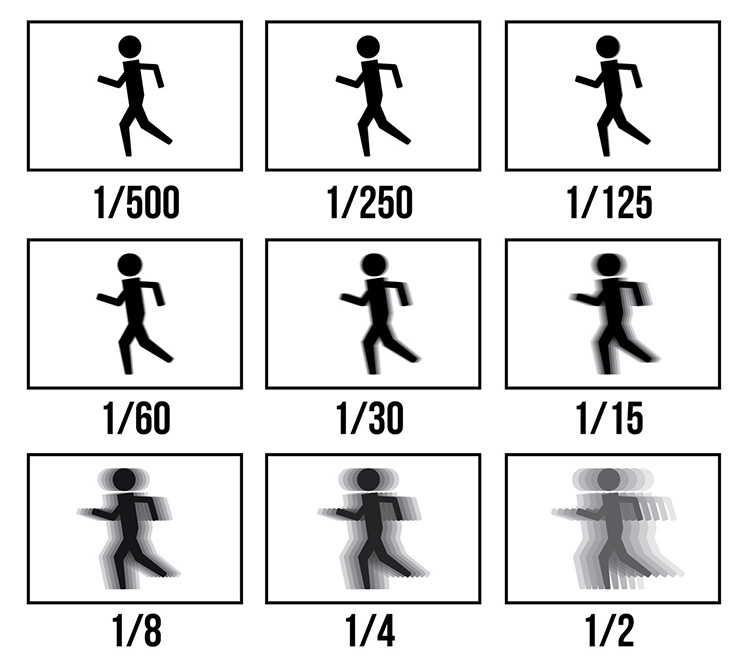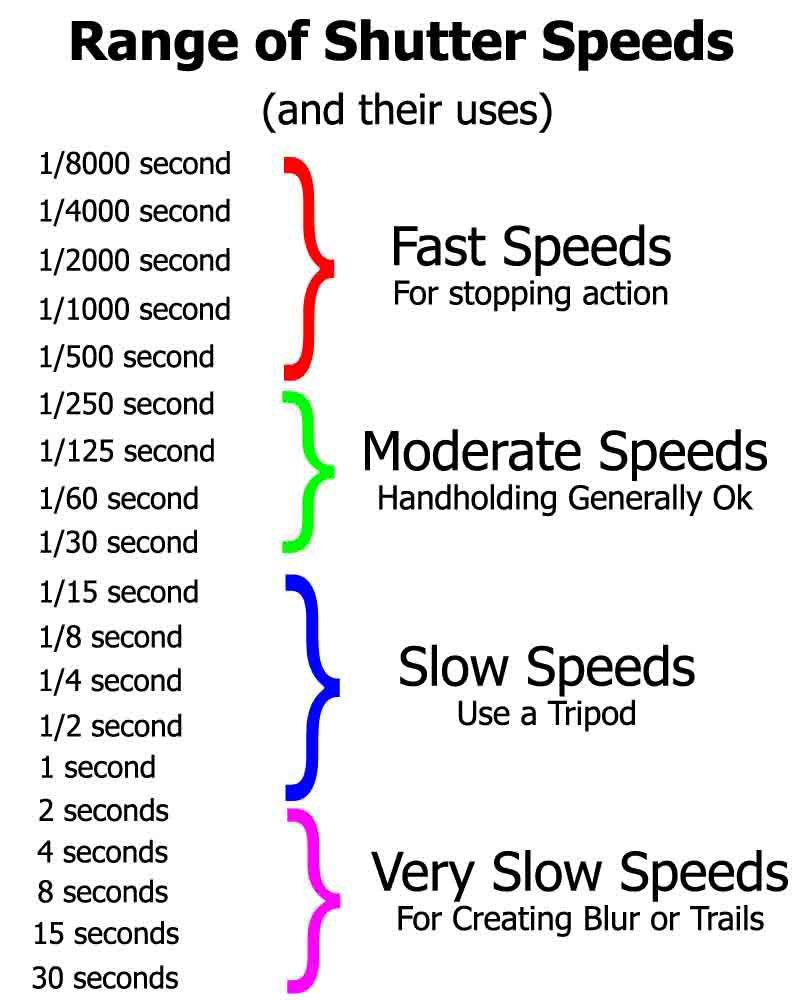What is Shutter Speed?
The definition of shutter speed in photography is pretty straightforward. It refers to the amount of time (or rate of speed) your shutter stays open when capturing an image. Shutter speed is measured in seconds or fractions of a second.
This chart shows how different shutter speeds affect things such as motion and amount of light coming in your camera.
 The faster your shutter speed is, the shorter amount of time your shutter stays open to capture an image. The slower your shutter speed, the longer your shutter stays open.
The faster your shutter speed is, the shorter amount of time your shutter stays open to capture an image. The slower your shutter speed, the longer your shutter stays open.
How Does Shutter Speed Affect Exposure?
One thing that your shutter speed settings affect is the amount of light that will hit your sensor. If you shoot with faster shutter speeds, the shutter will be open for shorter amounts of time, resulting in less light coming in. If your shutter is open longer with slow shutter speeds, more light will have time to hit your sensor.
If you were to take ISO settings and Aperture settings (which also play a role in overall exposure results) out of the equation, you will see that shutter speed alone can greatly affect the exposure outcome of your images.
The guide below shows how different shutter speeds affect exposure and the amount of light that comes through your lens.
 As you can see, the faster your shutter opens and closes, the darker your image will be. The slower your shutter speed (the longer it stays open), the brighter your image will be.
As you can see, the faster your shutter opens and closes, the darker your image will be. The slower your shutter speed (the longer it stays open), the brighter your image will be.
This is important to take note of because you may need to adjust other settings (ISO and Aperture) to get the proper exposure balance. You don’t want your images to be over or under exposed because of your shutter speed settings. So you will need to adjust other settings accordingly.
A good way to become familiar with shutter speed is to put your camera in Shutter Speed Priority mode and take images in different lighting situations.
Take note of how one particular shutter speed changes your ISO and Aperture settings when working in different lighting scenarios. This will help you to become familiar with the other settings that are affected by shutter speed when you start experimenting in Full Manual Mode.
How Does Shutter Speed Affect Motion?
Another thing that your shutter speed affects is motion in your images. Shooting with fast shutter speeds will freeze motion. Faster shutter speeds work great for sports, active children, or any situation where you want to freeze motion.
This graph shows how shutter speed affects motion:

If you take an image of someone running, for example, you can see that faster shutter speeds will freeze your subject, whereas slower shutter speeds will capture more motion blur. This is because the longer your shutter is open, the more motion it will detect.
In some cases, you may want to purposely capture motion for more artistic/creative purposes. If so, experiment with shooting motion with slower speeds. Just keep in mind that you may have to adjust your ISO and Aperture settings to avoid having an overexposed image.
When To Use a Tripod:
Another very important thing to keep in mind is that when you are shooting with slower shutter speeds, camera shake will affect your images much more.
This means any slight movement from you will cause blurred images.
The chart below shows when a tripod or some type of stabilization is recommended.
 Motion blur and camera shake are two different things. Camera shake is something you want to always avoid. As it could ruin an otherwise perfect shot.
Motion blur and camera shake are two different things. Camera shake is something you want to always avoid. As it could ruin an otherwise perfect shot.
We can adjust things like exposure in post processing/editing when needed. However, an accidental blurry image is basically impossible to save. So if you have generally shaky/unsteady hands, you should consider using a tripod as often as possible, regardless of shutter speed.
Put these tips to use when learning how to master shutter speed!
